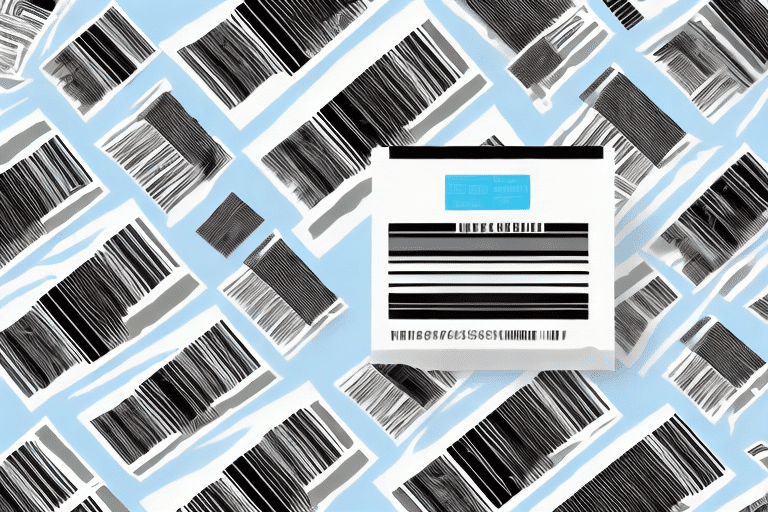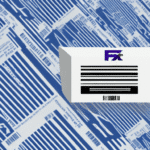Understanding How Shipping Labels Work
Shipping labels may seem like a small detail in the process of sending and receiving packages, but they play a crucial role in ensuring a smooth and efficient flow of goods. In this comprehensive guide, we will explore the various aspects of shipping labels, including their importance, types, creation, information, common mistakes, printing, barcode technology, choosing the right label, best practices, legal requirements, troubleshooting, benefits of using online tools, and case studies of businesses that use them effectively.
Why Shipping Labels Are Important
Shipping labels are essential because they contain vital information about the package, such as the sender's and recipient's addresses, phone numbers, tracking numbers, and other necessary instructions. Without accurate and complete shipping labels, packages can get lost, delayed, or returned, causing considerable frustration and inconvenience for both the sender and the receiver. Moreover, shipping labels help carriers identify the package's contents, weight, and value, which affects the shipping cost and insurance coverage.
Another reason shipping labels are important is that they help ensure compliance with customs regulations and international trade laws. Shipping labels provide information about the package's origin, destination, and contents, which customs officials use to determine whether the shipment meets the legal requirements and restrictions. Failure to comply with these regulations can result in fines, penalties, and even legal action. For more details on customs requirements, refer to the official customs guidelines.
Furthermore, shipping labels can serve as a marketing tool for businesses. By customizing the labels with their logo, brand colors, and promotional messages, companies can enhance their brand recognition and customer loyalty. Shipping labels can also include special offers, discounts, or referral codes to incentivize customers to make repeat purchases or refer their friends and family to the business.
Types of Shipping Labels
Shipping labels come in various types, each suited to different needs:
- Adhesive Labels: The most common type, featuring a sticky side that attaches directly to the package.
- Integrated Labels: Combine a shipping label and a packing slip in one document, reducing paper waste.
- Peel-Off Labels: Have a removable backing that reveals a sticky surface, allowing precise placement on the package.
- Thermal Labels: Use heat-sensitive paper to generate text and graphics, saving ink and providing sharper images.
- Clear Labels: Transparent labels that allow the package design to be visible, often used for promotional purposes.
- Eco-Friendly Labels: Made from recycled materials, these labels are a sustainable option for environmentally conscious businesses.
Choosing the right type of shipping label depends on your specific needs, such as the volume of shipments, the importance of branding, and environmental considerations.
How to Create a Shipping Label
You can create a shipping label using several methods, including:
- Shipping Software: Automates the process by importing order data, verifying addresses, selecting carriers and services, and generating labels.
- Carrier Websites: Offer similar features to shipping software but may require manual data entry.
- Label Printers: Enable on-demand printing of labels, saving time and reducing errors.
- Manual Forms: Suitable for low-volume shippers but require more effort and accuracy.
When creating a shipping label, ensure that all information is accurate and up-to-date. This includes the recipient's and sender's names and addresses, package weight and dimensions, and any special instructions or requirements. Double-checking this information can help prevent delays or delivery errors.
Additionally, consider the type of packaging used. Different carriers have specific requirements regarding size, weight, and material. Choosing appropriate packaging not only ensures the safe and secure delivery of the package but may also qualify your shipment for carrier discounts or incentives.
Understanding the Information on a Shipping Label
A shipping label contains several key pieces of information necessary for accurate and timely delivery:
- Sender's Information: Name, street address, city, state, and zip code.
- Recipient's Information: Name, street address, city, state, and zip code.
- Tracking Number: Allows both sender and recipient to monitor the package's journey.
- Carrier and Service Used: Indicates which shipping company and service level are handling the package.
- Package Type and Weight: Essential for calculating shipping costs and ensuring proper handling.
- Special Instructions: Notes such as "Fragile," "Perishable," or "This Side Up" to guide carriers.
It's crucial that all information on the shipping label is accurate and legible. Errors or unclear handwriting can lead to delays or lost packages. Including a return address is also recommended in case the package cannot be delivered to the recipient. Additionally, follow any specific guidelines or regulations for shipping certain items, such as hazardous materials or international shipments, to ensure compliance with laws and regulations.
Common Mistakes to Avoid When Creating a Shipping Label
Creating a shipping label involves several steps where errors can occur. Common mistakes include:
- Typos in Addresses or Tracking Numbers: Can lead to delivery failures or misrouted packages.
- Mismatching Package Type and Weight: May result in incorrect shipping costs or handling issues.
- Omitting Crucial Information: Such as apartment numbers or suite numbers, which are essential for accurate delivery.
- Using Illegible or Inappropriate Fonts: Makes it difficult for carriers to read and process the label.
Additionally, improper packaging can compromise the integrity of the shipment. Use appropriate materials like bubble wrap or packing peanuts to protect the item, and ensure the package is securely sealed with tape. Avoid loose or protruding items that could damage the package or get caught in carrier machinery.
Lastly, choosing the wrong shipping method can lead to delays, additional fees, or lost packages. Consider factors such as destination, package size and weight, and delivery urgency when selecting your shipping method. Research and compare different shipping options to find the one that best meets your needs.
How to Print a Shipping Label
Printing a shipping label requires the following:
- A Compatible Printer: Ensure your printer can handle the label size and type.
- Quality Label Paper: Use high-quality label paper to prevent smudging or tearing.
- Proper Software or Website: Utilize shipping software or a carrier's website to generate the label.
Steps to print a shipping label:
- Choose the appropriate printer and load the label paper correctly.
- Verify the label layout and design to ensure it meets the carrier's standards and your business needs.
- Select the print option and wait for the printer to complete the job.
- Inspect the printed label for accuracy and quality before affixing it to the package.
Ensuring the label is printed correctly is vital for preventing shipping issues and ensuring the package reaches its destination without delays.
The Role of Barcode Technology in Shipping Labels
Barcode technology is a vital component of shipping labels that enhances their accuracy and efficiency. Barcodes are scannable symbols that encode the package's data, reducing the chances of manual or data entry errors. They provide real-time tracking and visibility of the package's location and status, allowing for proactive problem-solving and enhanced customer service.
Moreover, barcodes facilitate automation and integration of shipping processes, from label creation to carrier selection, delivery, and returns. Advanced barcode systems can also incorporate additional information such as delivery timeframes and route optimization, further streamlining the shipping process.
Tips for Choosing the Right Shipping Label for Your Business
Choosing the right shipping label for your business depends on several factors:
- Volume of Packages: High-volume shippers may benefit from durable, high-efficiency labels like thermal labels.
- Type of Products: Fragile or perishable items may require labels with special handling instructions.
- Shipping Destinations: International shipments might need additional information such as customs declarations.
- Carrier Requirements: Different carriers may have specific labeling standards and preferences.
- Branding Needs: Customizable labels can enhance brand recognition and customer experience.
- Environmental Considerations: Eco-friendly labels align with sustainable business practices.
Additional tips include using high-quality labels that can withstand various weather and handling conditions, selecting the appropriate label size and material based on package dimensions and weight, and customizing label design and content to reflect your brand identity and service level. Aligning with the carrier's sustainability and compliance policies can also provide long-term benefits.
Best Practices for Using Shipping Labels Effectively
To use shipping labels effectively, adhere to the following best practices:
- Validate Address Data: Regularly update and verify address information to prevent delivery issues.
- Use Appropriate Packaging: Match package type and size to shipping requirements to ensure safe transit.
- Select Cost-Effective Carriers: Research and choose carriers that offer the best balance of cost and reliability for your needs.
- Include Clear Instructions: Provide concise and specific handling instructions to guide carriers.
- Track Shipments: Monitor package progress and keep customers informed about delivery status.
- Continuous Improvement: Regularly review and refine your shipping processes to enhance efficiency and customer satisfaction.
The Future of Shipping Labels: Trends and Innovations
Shipping labels are evolving alongside technological advancements and changing consumer preferences. Future trends and innovations include:
- Smart Labels: Incorporating IoT sensors and GPS to provide real-time data on package conditions and location.
- Sustainable Materials: Increasing use of eco-friendly materials and practices to reduce environmental impact.
- Data Analytics and AI: Utilizing predictive and prescriptive analytics to optimize shipping routes and processes.
- Omnichannel and Same-Day Delivery: Expanding delivery options to meet growing consumer demand for faster service.
Staying up-to-date with these trends can give businesses a competitive advantage and improve the overall customer experience. For example, smart labels can enhance tracking accuracy and provide valuable insights into shipping performance.
Legal Requirements for Shipping Labels
Shipping labels must comply with various legal and regulatory requirements to prevent safety hazards, fraud, or non-compliance penalties. Mandatory information includes:
- Hazard Warnings: Required for dangerous goods to ensure safe handling.
- Country of Origin and Destination: Essential for international shipments to comply with trade regulations.
- Tax and Duty Information: Necessary for customs clearance and calculating applicable fees.
- Prohibited Items List: Ensures restricted goods are not shipped without proper authorization.
Additionally, adhere to carrier-specific rules and guidelines regarding maximum weight and size limits, packaging and labeling standards, and documentation and insurance requirements. For comprehensive legal guidelines, consult the official shipping regulations.
How to Troubleshoot Common Issues with Shipping Labels
Despite following best practices, you may encounter issues with shipping labels such as incorrect data, damaged labels, or printer errors. Here are some troubleshooting tips:
- Verify Data Sources: Ensure the information used to generate labels is accurate and formatted correctly.
- Check Label Quality: Inspect label paper for defects and ensure it is loaded correctly in the printer.
- Maintain Printers: Regularly clean printer heads and sensors to prevent errors and ensure high-quality prints.
- Adjust Printer Settings: Modify settings such as print density and speed to suit label materials.
- Seek Technical Support: Contact the carrier's customer service or technical support for persistent issues.
Addressing these common problems promptly can minimize disruptions in your shipping process and maintain customer satisfaction.
Benefits of Using Online Tools for Creating and Printing Shipping Labels
Online tools offer numerous advantages over traditional methods of creating and printing shipping labels:
- Accessibility: Access online tools from anywhere with an internet connection, enhancing flexibility and convenience.
- Real-Time Updates: Receive instant notifications and tracking information, improving transparency and customer communication.
- Integration: Seamlessly integrate with other business systems such as e-commerce platforms, inventory management, and supply chain software.
- Customization: Utilize customizable templates and designs to streamline workflow and enhance data analysis.
Additionally, online tools can reduce the need for physical travel and equipment, saving time and costs. They also offer scalable solutions that can grow with your business. For more information on leveraging online tools, visit our benefits page.
Case Studies: Success Stories from Businesses That Use Effective Shipping Labels
Examining real-world examples illustrates the impact of effective shipping label management:
- Fashion Retailer: Reduced return rates and increased sales conversion by using clear, branded shipping labels with special instructions and tracking information.
- Grocery Delivery Service: Implemented smart labels with temperature sensors and route optimization algorithms to enhance product freshness and delivery speed.
These case studies demonstrate that strategic use of shipping labels can significantly improve operational efficiency and customer satisfaction. By investing in quality labeling solutions, businesses can enhance their reputation and achieve better financial outcomes.






















